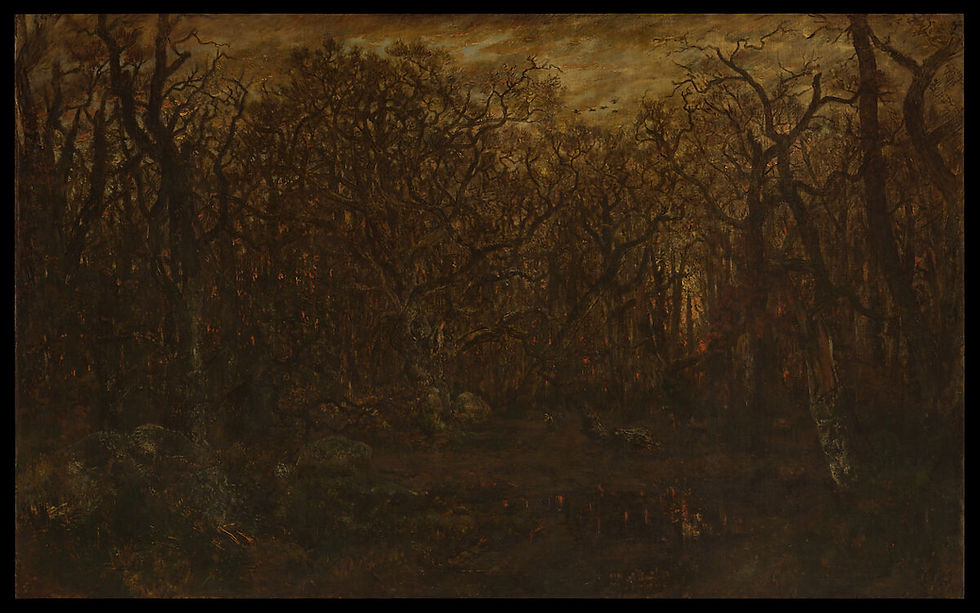Journey to Arcadia: Part 1
- Kevin Keller
- Jun 12
- 2 min read
Updated: Jul 18

It all began with an afternoon adventure to The Met on a chilly day in January 2024. I crossed Central Park from the Upper West Side, bundled up and full of curiosity, on a mission to find images that might spark some new sounds. I think I already knew that I was chasing after landscapes—something with depth, something you could fall into. I was dreaming up an ambient album, after all, so I needed visuals you could get lost in.
One of the first pieces that caught my attention was Moonlight, Wood Island Light by Winslow Homer, painted way back in 1894. Picture this: a moody ocean scene under a curtain of clouds, with moonlight streaming in from off-frame and lighting up the waves just as they crash onto the rocks. It was brooding and dramatic - basically my ideal soundtrack. I snapped a quick photo, jotted down the details, and wandered on.
A few steps later, something completely different caught my eye: a sun-drenched meadow, cheerful and bright. In the painting, two nude sunbathers lounged on a blanket while a third (also nude, because why not?) played a pan flute like it was the most natural thing in the world. The piece was Arcadia by Thomas Eakins, painted in 1883. I was kind of surprised that it grabbed me, being so different from my usual moody favorites, but hey, inspiration is weird like that. Another photo for the archive.
Then came the showstopper: a massive canvas practically glowing with sunlight, showing a vast gorge stretching out to the horizon. A few trees stood watch on the edge, giving you a sense of just how huge the scene was. And way down in the gorge, a tiny house perched on a patch of green grass. The painting was A Gorge in the Mountains by Sanford R. Gifford (1862), and it was all but begging to be turned into music.

Of course, those weren’t the only gems I found. There was The Farrier by Aert van der Neer (1650), The Forest in Winter at Sunset by Théodore Rousseau (1846), Twilight on the Sound by John Frederick Kensett (1872), and about a dozen others that whispered melodies and textures as I wandered by.
By the time I stepped back out into the city, I had a phone full of photos and a head full of ideas that could start me down the road to new music. Not bad for a casual day at the museum.




Comments